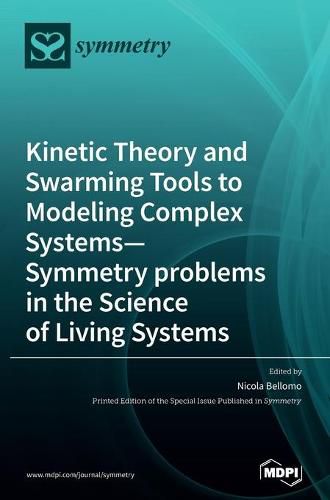Readings Newsletter
Become a Readings Member to make your shopping experience even easier.
Sign in or sign up for free!
You’re not far away from qualifying for FREE standard shipping within Australia
You’ve qualified for FREE standard shipping within Australia
The cart is loading…






This title is printed to order. This book may have been self-published. If so, we cannot guarantee the quality of the content. In the main most books will have gone through the editing process however some may not. We therefore suggest that you be aware of this before ordering this book. If in doubt check either the author or publisher’s details as we are unable to accept any returns unless they are faulty. Please contact us if you have any questions.
This MPDI book comprises a number of selected contributions to a Special Issue devoted to the modeling and simulation of living systems based on developments in kinetic mathematical tools. The focus is on a fascinating research field which cannot be tackled by the approach of the so-called hard sciences-specifically mathematics-without the invention of new methods in view of a new mathematical theory. The contents proposed by eight contributions witness the growing interest of scientists this field. The first contribution is an editorial paper which presents the motivations for studying the mathematics and physics of living systems within the framework an interdisciplinary approach, where mathematics and physics interact with specific fields of the class of systems object of modeling and simulations. The different contributions refer to economy, collective learning, cell motion, vehicular traffic, crowd dynamics, and social swarms. The key problem towards modeling consists in capturing the complexity features of living systems. All articles refer to large systems of interaction living entities and follow, towards modeling, a common rationale which consists firstly in representing the system by a probability distribution over the microscopic state of the said entities, secondly, in deriving a general mathematical structure deemed to provide the conceptual basis for the derivation of models and, finally, in implementing the said structure by models of interactions at the microscopic scale. Therefore, the modeling approach transfers the dynamics at the low scale to collective behaviors. Interactions are modeled by theoretical tools of stochastic game theory. Overall, the interested reader will find, in the contents, a forward look comprising various research perspectives and issues, followed by hints on to tackle these.
$9.00 standard shipping within Australia
FREE standard shipping within Australia for orders over $100.00
Express & International shipping calculated at checkout
This title is printed to order. This book may have been self-published. If so, we cannot guarantee the quality of the content. In the main most books will have gone through the editing process however some may not. We therefore suggest that you be aware of this before ordering this book. If in doubt check either the author or publisher’s details as we are unable to accept any returns unless they are faulty. Please contact us if you have any questions.
This MPDI book comprises a number of selected contributions to a Special Issue devoted to the modeling and simulation of living systems based on developments in kinetic mathematical tools. The focus is on a fascinating research field which cannot be tackled by the approach of the so-called hard sciences-specifically mathematics-without the invention of new methods in view of a new mathematical theory. The contents proposed by eight contributions witness the growing interest of scientists this field. The first contribution is an editorial paper which presents the motivations for studying the mathematics and physics of living systems within the framework an interdisciplinary approach, where mathematics and physics interact with specific fields of the class of systems object of modeling and simulations. The different contributions refer to economy, collective learning, cell motion, vehicular traffic, crowd dynamics, and social swarms. The key problem towards modeling consists in capturing the complexity features of living systems. All articles refer to large systems of interaction living entities and follow, towards modeling, a common rationale which consists firstly in representing the system by a probability distribution over the microscopic state of the said entities, secondly, in deriving a general mathematical structure deemed to provide the conceptual basis for the derivation of models and, finally, in implementing the said structure by models of interactions at the microscopic scale. Therefore, the modeling approach transfers the dynamics at the low scale to collective behaviors. Interactions are modeled by theoretical tools of stochastic game theory. Overall, the interested reader will find, in the contents, a forward look comprising various research perspectives and issues, followed by hints on to tackle these.